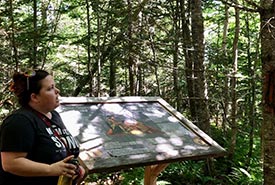Five Fun Facts About Blue-Footed Boobies
The remote Galapagos Islands are home to an amazing assortment of unique wildlife. The most famous bird of the Galapagos is the blue-footed booby. While they are not endemic to the islands, about 50 percent of the world’s breeding pairs live here. These birds’ bright blue feet and sleek brown feathers are sure to make an appearance on any Galapagos itinerary. Keep reading to learn more about these iconic birds!

A blue-footed booby stands on a rock in the Galapagos Islands and offers the photographer a great view of its cerulean feet. (Image credit: Cassiano “Zapa” Zaparoli)
They love showing off their blue feet.
Male blue-footed boobies perform a courtship dance that involves strutting while picking up and showing off their feet when pursuing a mate. Females are attracted to the color: the brighter blue a male’s feet are, the more interested the female will be.
Blue-footed boobies nest on the ground using self-produced materials.
Blue-footed boobies lay their eggs in small depressions on the bare ground. They defecate on and around the eggs to make their nests, which builds cover out of guano. The birds also use their large, webbed feet to cover their young and keep them warm.

Two male blue-footed boobies fight and show off in a grassy area. (Image credit: Jennifer Bravo)
They are collaborative parents.
Both male and female blue-footed boobies contribute to protecting and raising their young. Breeding pairs typically care for between one and three blue eggs at a time. In times of scarcity, as the chicks grow, one or two will become dominant and take all of the food, leaving the weaker chicks to starve. Baby blue-footed boobies have such fluffy feathers that they often appear larger than their parents.
The name “blue-footed booby” comes from their awkward movement on land, as well as their azure feet.
Several types of boobies beyond our blue-footed friends are present in the Galapagos Islands. Their name comes from the Spanish word “bobo,” which means stupid. They received the name when Spanish explorers saw them waddling clumsily on land, their least graceful movement.

A group of four blue-footed boobies sit on rocks beside the ocean in the Galapagos Islands. (Image credit: Greg Courter)
Males and females look a lot alike.
Male and female blue-footed boobies are almost identical. The only differences are that females are slightly larger and have larger pupils, which have a star-like shape.
Have you seen blue-footed boobies in the Galapagos? What did you notice about them?
About the author: Julie Waggoner View all posts by Julie Waggoner
Julie is a Colorado native who grew up searching for wildlife in the Rocky Mountains and a passionate world traveler. She has lived in Europe and Asia for more than four years and loves visiting both wild and historic places.





